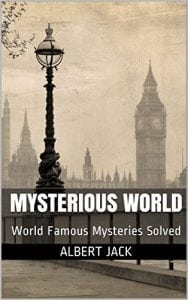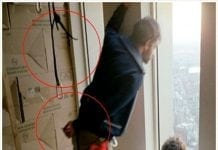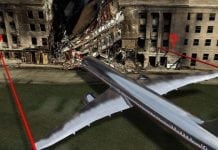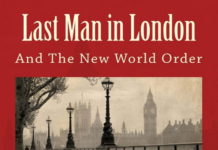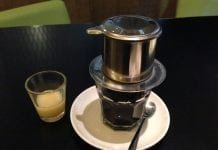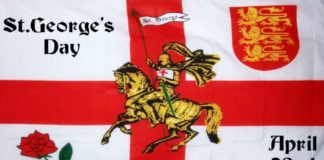
Did the famous ex-Beatle really die in a car crash back in 1966?
On 12 October 1969, Tom Zarski rang the ‘Uncle’ Russ Gibb’s radio show on WKNR-FM in Dearborn, Michigan, and announced that Paul McCartney had been killed in an accident in November 1966 and the Beatles had drafted in a lookalike to keep the band fully functioning.
He backed up his argument with several pieces of credible circumstantial evidence, including the decision by the band in 1967 to stop playing live in order to concentrate on their studio recordings and film work.
Russ Gibb was so intrigued by the story that he then spent two hours on air mulling over the clues and playing Beatles records. When one caller urged him to play ‘Revolution 9’ (from The White Album) backwards, Gibb was amazed to find he could distinctly make out the words ‘Turn me on, dead man’ through his headphones.
Despite the fact that Zarski had pointed out he didn’t actually believe Paul McCartney was dead, he was just interested in the theory, by the end of the programme networks across the United States were discussing the mysterious death of one of the world’s most famous rock stars and the events surrounding his demise.
Hundreds of news journalists promptly flew to London and interviewed as many of the conspiracy theorists they could find, and from the reports that followed the only certainty is that many of them were experimenting with LSD, as none of it made much sense at all.
The story ran that on the evening of Tuesday 8 November 1966 Paul McCartney and John Lennon were working late into the night on the Beatles’ upcoming album Sgt Pepper’s Lonely Hearts Club Band when a row developed over recording techniques and McCartney stormed out of the studio.
Furious, he sped off in his Aston Martin and smashed into a van, dying instantly. The resulting fire prevented the coroner from positively identifying the body but the remaining band members were left in no doubt at all that McCartney had not survived.
Another caller to Russ Gibb’s show claimed that McCartney had picked up a hitchhiker called Rita that night. When she suddenly realized who he was, she had screamed and lunged at her hero, causing him to crash into the van. Neither Rita nor the other driver were ever seen or heard from again.
The public mourned as shock in but there was one unavoidable question: if McCartney had died in 1966, who was the man that looked like Paul and who had been hanging out with the Beatles ever since?
The explanation ran that Beatles manager Brian Epstein was so horrified at the thought of the world’s most successful band breaking up that he held secret auditions and persuaded John, George and Ringo to have all their photographs taken with a stand-in to keep the public unaware of the accident.
When Epstein died only nine months later, after a battle with depression and drug abuse, his untimely demise was cited as another piece of evidence. It was said that he just couldn’t come to terms with the loss of McCartney.
The Paul-is-dead mystery was also conveniently used to explain McCartney’s sudden split from long-term fiancée Jane Asher (because McCartney stand-in William Shears Campbell didn’t like her) and that his new relationship with Linda Eastman (later McCartney) was Campbell’s real love interest.
Another piece of supposedly compelling evidence is that for several years the other three Beatles had wanted to stop playing live shows because the audiences were screaming so loudly they couldn’t could hear anything, but McCartney had resisted.
With Paul gone, the remaining three could do as they pleased – indeed the Beatles had last performed live on 29 August 1966, at Candlestick Park in San Francisco, and played no more live concerts after that. Conspiracy theorists nodded and agreed that it all made perfect sense, while others, including the Beatles, laughed it off as a ridiculous urban legend.
And still the story continued. One American radio presenter had photographs of the singer before and after November 1966 scientifically compared and found there were obvious differences, one being that the nose was of a different length.
A doctor from the University of Miami analysed voice recordings and concluded publicly that the recordings prior to August 1966 were different to those recorded afterwards. Paul McCartney, he claimed, did not sing on Beatles records after August 1966.
By now fans all over the world were beginning to look for their own clues in Beatles music and album covers, and the clues turned up in spades. Here then are some of them, and the evidence seemingly pointing to the fact that Paul McCartney was dead.
Sgt Pepper was the first album the Beatles released after the supposed accident, after recording began on 6 December 1966. When it reached the shops in June 1967, nobody noticed anything unusual about the artwork in connection with the Paul McCartney mystery, but in 1969 conspiracy theorists were able to detect a range of coded references to Paul’s demise.
For a start the band appear to be standing at a graveside complete with flowers and wreaths. They are surrounded by famous personalities, who could be mourners, and one of them is holding an open hand above McCartney’s head, said to be a traditional Eastern symbol for death.
The theorists looked closer and concluded that the yellow flowers at the foot of the picture are arranged in the shape of a left-handed bass guitar, Paul’s instrument, and one of the four strings is missing, signifying his absence.
Under the doll’s arm on the right hand side there appears to be a blood-stained driving glove and the doll itself has a head wound similar to the one Paul was supposed to have died from and he is wearing a badge on his sleeve on the inside cover bearing the letters OPD, standing for ‘Officially Pronounced Dead’.
The open-palm gesture actually appears on the front cover of Revolver, twice in the Magical Mystery Tour booklet, twice in the Magical Mystery film and twice on the cover of the original Yellow Submarine sleeve, but, in reality, none of it means anything at all.
There is no such gesture in Indian culture symbolizing death. The badge Paul is wearing on the inside sleeve does not read ‘OPD’, it has the initials OPP on it. The badge was in fact given to McCartney when he visited the Ontario Provincial Police in Canada during the Beatles’ world tour in 1965.
A statue of Kali, a Hindu goddess, also features on the front cover of the Sgt Pepper album, which the theorists maintain represents rebirth and regeneration, hinting that one of the Beatles has been reborn, or replaced.
But Kali, from which the name of Calcutta is believed to derive, has traditionally been a figure of annihilation, representing the destructive power of time (kala being the Sanskrit word for ‘time’)
Also, the ‘O’ shaped arrangement of flowers at end of the band’s name has caused some theorists to speculate that the whole thing reads ‘BE AT LESO’ instead of ‘BEATLES’.
This was taken as a sign that Paul was buried at Leso, the Greek Island the band had supposedly bought. But none of the Beatles had bought a Greek island and there is no such place as Leso.
There are many more pieces of ‘convincing’ evidence. I’ve just picked out some of my favourites.
The Beatles all grew moustaches at the time to help mask a scar on the lip of McCartney stand-in William Shears Campbell.
In fact McCartney did grow a moustache for Sgt Pepper as he was unable to shave at the time. Paul had fallen off his scooter on his way to visit his aunt and split his lip on a pavement, making it too painful to shave.
He also lost a front tooth in the accident, explaining why he appears in the ‘Rain’ and ‘Paperback Writer’ promo videos missing one of his teeth. The accident also explains the scars seen during the White Album photograph sessions.
The number plate on the VW Beetle shown on the Abbey Road cover reads LMW 281F, taken to mean Paul would have been 28 ‘IF’ he had survived.
But Paul would have been only twenty-seven, and the VW Beetle had nothing to do with anyone at Abbey Road. The director of the photo sessions tried to have it towed away, but the police took too long to arrive so they went ahead with the picture anyway, leaving it in shot.
McCartney is wearing no shoes in the Abbey Road photograph.
His explanation was: ‘It was a hot day and I wanted to take my shoes off, to look slightly different to the others. That’s all that was about. Now people can tell me apart from the others.’ But the conspiracy theorists swore that the picture had been set up to look like a funeral march, with him as the corpse.
On the records Rubber Soul, Yesterday and Today, Help and Revolver there were said to be many more clues. The song ‘I’m Looking Through You’ on Rubber Soul was thought to be about discovering that McCartney had been replaced.
Some fans took these blatant ‘clues’ as hard evidence while others quickly realized all of those records were made prior to 9 November 1966 and could not possibly have anything to do with the supposed accident.
But with hysteria mounting, even the thinnest clue came to look like definite evidence. In the lyrics to ‘I am the Walrus’, the line ‘stupid bloody Tuesday’ is taken by some to be John Lennon referring to the day of the accident that claimed his band mate.
But when it was pointed out the alleged accident was supposed to have happened on a Wednesday morning, conspiracy theorists then claimed it was the Tuesday night that the two of them had fallen out before McCartney had stormed off, and to his death. Some believed it, while others dismissed it as an already thin lead being stretched even thinner.
But then came the line ‘waiting for the van to come’, a supposed reference to the ambulance, and ‘goo goo ga joob’ – apparently Humpty Dumpty’s last words before he fell off that wall and bashed his head in, as Paul was supposed to have done.
The Beatles themselves very quickly became very irritated by all the speculation. And it was not long before the band, aware every lyric and photo shoot was now being studied, began to play up to the hysteria. After writing one complicated and seemingly meaningless song called ‘Glass Onion’ Lennon remarked, ‘Let the f**kers work that one out.’
But he included the lines ‘Well here’s another clue for you all / The walrus was Paul’. In no time at all, people were announcing the walrus was a symbol of death to some cultures and Lennon despaired. It wasn’t much fun being a Beatle any more and the band broke up soon afterwards.
So – to sum up – if the real Paul McCartney had died in his Aston Martin in 1967, and a replacement found in time for the photo shoots for the next album, then imagine the string of coincidences that needed to have taken place. For a start he had to look and sound just like Paul.
Then he had to convince Linda or, if she was in on the plot, she had to like him enough to stay married to him for the next thirty years. And he would have had to learn how to play guitar left-handed, which is even less likely, I can assure you.
John Lennon would have to have been fooled too, as it is unlikely he would want share song-writing credits and royalties with a stranger for the last three years of Beatles recordings, especially as Epstein wasn’t there to tell him to.
And most of all, for the lookalike to have written and recorded songs of a McCartney standard for over thirty years would be hard to imagine.
Hang on a minute, I have just remembered ‘The Frog Chorus’ and ‘Mull of Kintyre’, and so my argument is beginning to wear thin, even to me. And another thing – would the real Paul McCartney have married Heather Wills, or whatever her name was? Perhaps Zarski was right after all – there must be an impostor. – Albert Jack
Albert Jack AUDIOBOOKS available for download here
Albert Jack’s Mysterious World

